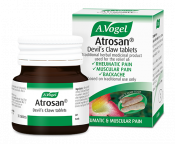Muscle cramps when walking
Cramp refers to the painful sensation when muscles suddenly seize up or spasm.
In many cases, experiencing muscle cramps when walking is just a sign that you are walking too fast or on too steep an incline, causing the muscles to become fatigued. This can be easily fixed by slowing down or picking an easier route until your fitness levels build up.
Cramp is also particularly common during hotter conditions, as this can trigger a condition called heat cramp.
Sometimes, however, the cause of muscle cramps while walking can be a bit more serious and require medical treatment, so it’s really important to figure out what is causing your cramps, and speaking to your GP is the best way to do this.
So what are the possible causes?
Heat cramp
Heat cramp occurs when you sweat more than usual, causing you to lose both water and vital electrolytes. These electrolytes, such as sodium, magnesium and calcium, are vital for muscle and nerve function. If you lose too many electrolytes and don’t replace them, then your muscles and nerves begin to malfunction, causing what is known as heat cramps.
Heat cramps commonly occur in warmer weather, or if you undergo particularly strenuous exercise without drinking enough water and replacing electrolytes. It is not a very serious condition that can be easily remedied.
Peripheral artery disease
This is when arteries become narrowed due to a build-up of plaque along the walls of the artery. This means less blood is able to travel through the arteries and into the working muscles (in the case of walking, the legs). These muscles can quickly become starved of oxygen and nutrients, which causes them to cramp.
Peripheral artery disease can be caused by a number of things, but some of the most common are smoking, lifestyle and poor diet. Diets high in fat and cholesterol contribute to the formation of plaque, and a sedentary lifestyle can make clots more likely.
Peripheral artery disease in the legs is also an indication that there may be problems with arteries elsewhere in the body – which can contribute to heart attacks. This is a serious condition that must be treated by a doctor.
Varicose veins and chronic venous insufficiency
Like peripheral artery disease, chronic venous insufficiency can result in oxygen-starved muscles. Chronic venous insufficiency is simply the name for the condition that arises as a result of varicose veins – an inability to efficiently pump blood up from the legs to the heart.
Varicose veins are veins with damaged valves – these valves are supposed to stop blood flowing backwards, but when they are damaged they cannot fulfil this function, and blood begins to flow backward and pool in the veins. This causes a vicious circle, as the pooling of blood causes the veins to stretch, which further damages valves, leading to further pooling, stretching and valve damage.
This means that the veins struggle to move blood away from the lower legs and back towards the heart. When doing exercise, even gentle types such as walking, this can mean that the working muscles are quickly starved of oxygen as deoxygenated blood and toxins build up in these damaged veins, causing cramp.
If you spot the tell-tale signs of varicose veins, you should see your doctor to assess their severity.
Peripheral neuropathy
This is a condition where the nerves that are responsible for sending messages to and from the spinal cord and brain stop working properly. This means the nerves may fail to send messages, may send incorrect messages or may fire messages at random – resulting in tingling, numbness, twitching, loss of muscle control and cramping.
There can be a number of reasons for this, including nutrient deficiencies, toxins, illness, medication and inherited conditions, but one of the most common causes is diabetes – and this is known as diabetic neuropathy. It is thought that the high blood sugar can damage the blood vessels that supply nerve cells with oxygen and nutrients, leaving them ‘starved’. If you think you may suffer from peripheral neuropathy, it is important to see your doctor.
Spinal stenosis
Spinal stenosis occurs when structures in the lower back (such as the vertebrae or the discs between them) press on the tube that surround the spinal cord. This interferes with nerve function, causing similar symptoms to peripheral neuropathy – tingling, numbness, weakness, and occasionally cramping.
This can occur simply because of old age, or it can be caused by other conditions such as arthritis, injury or tumours. This condition must be managed by a doctor.
What can you do about it?
Managing this symptom really depends on the underlying cause.
I recommend first consulting your GP, to rule out any serious conditions. If you are diagnosed with peripheral artery disease, varicose veins, peripheral neuropathy or spinal stenosis, or any other serious condition, it is important to discuss treatment with your doctor and follow their recommended advice.
However, a few things I can suggest to reduce cramping include:
- Build up exercise slowly and gently so as not to overwork your muscles. Make sure to walk regularly, and remember it is perfectly okay to slow down or stop for a rest if you are experiencing cramp – and, in fact, this may be vital if you are suffering from a more serious condition
- Avoid exercising in hot gyms or outside on hot days – switch to a cool, air-conditioned gym instead, or exercise outside earlier in the day or later in the evening to avoid the hottest hours. This avoids putting unnecessary strain on muscles, and prevents you from sweating excessively – the main cause of heat cramps. Heat can also make varicose veins worse, so heat and exercise together is a sure way to induce cramps
- Drink plenty of water during and after exercise. Remember to drink something that replaces electrolytes too – a lot of people opt for coconut water, but I’d recommend Balance Mineral Drink, which contains magnesium, potassium, calcium and zinc, and also helps balance pH in the gut to ensure maximum absorption of nutrients
- Warm up and cool down – this slowly gets the muscles ready for exercise, and helps remove toxins after exercise. A slow 5 minute walk for both is helpful, as well as some gentle stretches
- If your cramps are caused by varicose veins, try taking Venaforce. This extract of horse chestnut helps to relieve the symptoms of varicose veins. You can also try Venagel, a gel extract of horse chestnut that can be rubbed on hot, aching legs for soothing relief
- If you have varicose veins, try elevating your feet for 15 minutes three times a day, before and after exercise, or just whenever they feel sore. This helps blood flow with gravity away from the feet and towards the heart.








